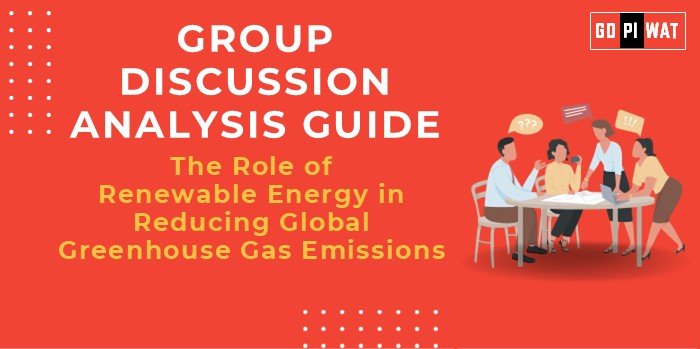📋 Group Discussion Analysis Guide: The Role of Renewable Energy in Reducing Global Greenhouse Gas Emissions
🌐 Introduction to the Topic
- 🔍 Opening Context: Renewable energy is at the forefront of combating climate change, offering sustainable alternatives to fossil fuels, which are the primary contributors to global greenhouse gas (GHG) emissions.
- 📊 Topic Background: As of 2024, global GHG emissions are driven significantly by energy production, contributing 73% to overall emissions. Renewables like solar, wind, and hydropower are pivotal in decarbonizing energy sectors globally.
📊 Quick Facts and Key Statistics
- 🌍 Renewable Energy Share: 29% of global electricity production in 2024 – highlights growth but underscores the need for acceleration.
- 💡 Emissions Reduction Potential: Solar and wind energy could reduce global CO2 emissions by 5 billion tons annually by 2030 (IEA, 2023).
- 💰 Investment Trends: $1.7 trillion invested in renewables in 2023, outpacing fossil fuels for the first time.
- 🏅 Top Renewable Leaders: Iceland produces 100% electricity from renewables; Norway follows closely at 98%.
- ⚠️ Carbon Budget: Keeping global warming below 1.5°C requires halving emissions by 2030, making renewables critical.
🤝 Stakeholders and Their Roles
- 🏛️ Governments: Policy frameworks (e.g., subsidies, net-zero targets).
- 📈 Private Sector: Technology development and investments.
- 🌐 International Organizations: UNFCCC and IEA drive global collaboration.
- 🙌 Civil Society: Advocacy for adoption and local-level implementation.
🏆 Achievements and Challenges
✨ Achievements:
- ⚡ Solar energy costs declined by 85% in a decade.
- 🌬️ Countries like Denmark generate 47% of electricity from wind.
- 🔋 Innovative storage solutions (e.g., Tesla’s Powerwall) bridge intermittency gaps.
⚠️ Challenges:
- 💸 High initial investments limit access in developing countries.
- ⏳ Intermittent power supply from solar and wind requires robust storage.
- 🏭 Political resistance from fossil-fuel-dependent economies.
🌍 Global Comparisons:
- ✅ Success: Germany’s Energiewende initiative increased renewable energy share to 46%.
- ⚡ Challenges: Australia’s dependence on coal highlights transition barriers.
🧠 Structured Arguments for Discussion
- ✔️ Supporting Stance: “Renewables are the fastest-growing energy sources, significantly curbing CO2 emissions globally.”
- ❌ Opposing Stance: “High costs and technological challenges limit renewable energy scalability in developing nations.”
- ⚖️ Balanced Perspective: “While renewables are vital, integrating storage solutions and global funding is essential for equitable adoption.”
💬 Effective Discussion Approaches
🎯 Opening Approaches:
- 📊 Statistical Impact: “The energy sector contributes over 70% of global GHG emissions; renewables are key to decarbonizing this critical area.”
- ⚡ Contrast: “Despite record growth in renewables, fossil fuels still dominate global energy.”
🛡️ Counter-Argument Handling:
- 💸 Acknowledge costs, propose subsidies and international funding.
- 🌟 Use successful examples (e.g., solar adoption in India) to refute scalability concerns.
📈 Strategic Analysis of Strengths and Weaknesses
- ✅ Strengths: Scalability, declining costs, job creation.
- ⚠️ Weaknesses: Intermittency, high initial costs.
- 🌟 Opportunities: Advances in battery technology, international cooperation.
- 🔴 Threats: Political resistance, reliance on rare earth materials.
🎓 Connecting with B-School Applications
💼 Real-World Applications:
- 📊 Projects in carbon trading and green finance.
- 📈 Strategies for scaling renewable integration in operations management.
📋 Sample Interview Questions:
- 💡 “How can renewable energy drive economic growth?”
- 💬 “Discuss the role of subsidies in renewable energy adoption.”
💡 Insights for B-School Students:
- 🌿 Explore renewable supply chains and circular economies.
- 📊 Analyze investment trends for renewable startups.


